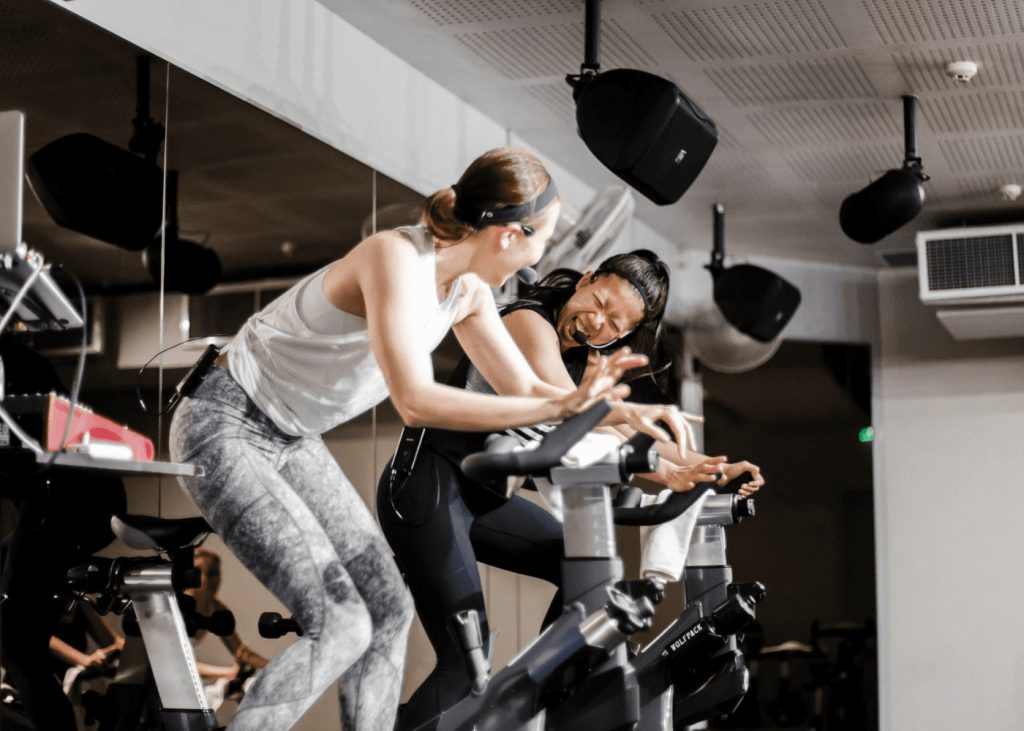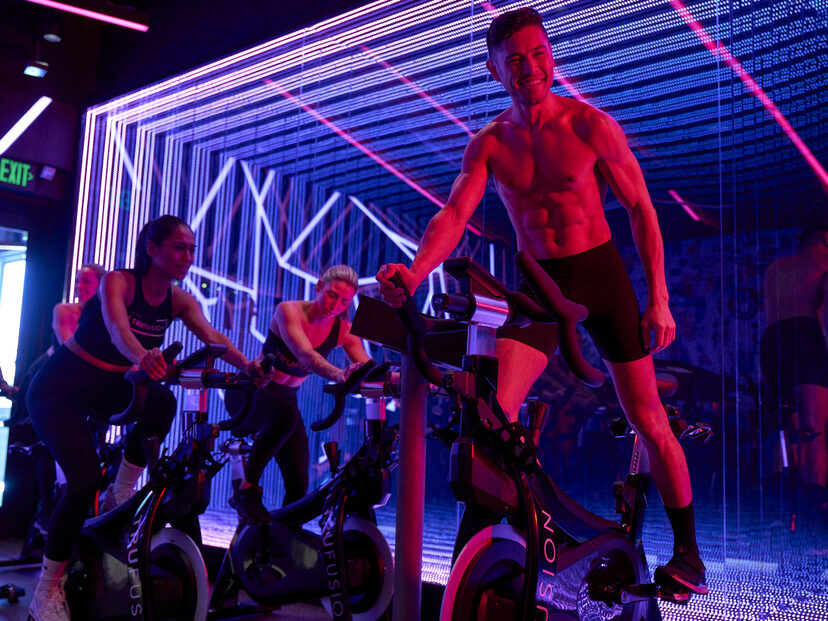What is Indoor Cycling?
Indoor cycling, also known as spinning, is a high-intensity cardiovascular workout conducted on stationary bikes. These bikes are equipped with weighted flywheels and adjustable resistance to mimic outdoor cycling conditions. Indoor cycling classes are usually led by a certified instructor who guides participants through various levels of intensity.
Benefits of Indoor Cycling
Indoor cycling offers numerous benefits, including improved cardiovascular health, increased muscle strength, and enhanced mental well-being. The controlled environment allows for intense, focused workouts regardless of weather conditions. Additionally, cycling is low-impact, making it suitable for people of all fitness levels.
Equipment and Setup
Choosing the Right Bike
A successful indoor cycling experience starts with the right equipment. Most indoor cycling bikes feature adjustable seats and handlebars to ensure comfort and proper posture. It’s crucial to select a bike with a smooth resistance system, preferably magnetic or belt-driven, for a quiet and efficient workout.
Proper Bike Setup
Proper bike setup can prevent injuries and improve comfort. Adjust the seat height so that there is a slight bend in your knee when the pedal is at its lowest point. The handlebars should be at a height that allows you to maintain a slight bend in your elbows. Proper pedal and shoe alignment are also essential for avoiding knee pain.

Techniques and Form
Basic Riding Positions
Indoor cycling primarily involves three basic positions: seated, standing, and hovering. Seated riding is used for low-intensity, steady-state sessions. Standing allows for increased resistance and is used during sprints and hill climbs. Hovering, where you’re halfway between seated and standing, focuses on core strength.
Correct Form
Maintaining proper form is critical for an effective and safe workout. Keep your back straight and avoid hunching your shoulders. Engage your core muscles to support your upper body. Use a controlled pedal stroke, pushing down and pulling up smoothly to balance effort and avoid fatigue.
Training Plans and Workouts
Types of Workouts
Indoor cycling workouts can vary widely in intensity and focus. Common types include interval training, endurance rides, and strength-building hill climbs. Interval training involves alternating between high-intensity sprints and low-intensity recovery periods. Endurance rides focus on maintaining a steady pace for an extended duration, while hill climbs simulate uphill cycling to build strength.
Creating a Training Plan
A well-structured training plan can help you achieve your fitness goals. Start by establishing a baseline with one or two weekly sessions. Gradually increase the frequency and intensity as your fitness improves. Include a mix of workout types to target different energy systems and muscle groups. Remember to incorporate rest days for recovery.

Nutrition and Hydration
Pre-Workout Nutrition
Fueling your body properly before a workout is essential for peak performance. A balanced meal containing carbohydrates, proteins, and healthy fats about two hours before your session can provide the sustained energy you need. Carbohydrates are your body’s primary energy source, and consuming them ensures that your muscle glycogen stores are full. Opt for complex carbs like whole grains, sweet potatoes, and brown rice. Proteins help with muscle repair and recovery, so include lean sources like chicken, fish, or plant-based options such as lentils or tofu. Healthy fats from avocados, nuts, or olive oil can help you feel satiated. If your workout is close to meal time, simple snacks like a banana or a smoothie can be effective. Bananas provide a quick source of energy with digestible carbohydrates and potassium, which helps prevent muscle cramps. Smoothies can be customized to include ingredients like fruits, Greek yogurt, and a bit of natural peanut butter for a balanced, easy-to-digest option.
Hydration
Staying hydrated is key during intense indoor cycling sessions. Proper hydration supports overall bodily functions and energy levels, helping you avoid symptoms like dizziness and muscle cramps. Drink water consistently throughout the day leading up to your workout to ensure you’re well-hydrated before you even step on the bike. Aim to consume at least 8-10 glasses of water daily, more if you are prone to heavy sweating or engaging in high-intensity sessions. During the workout, take small sips of water regularly to replace the fluids lost through sweat. An easy way to maintain this is to keep a water bottle within arm’s reach and set reminders if necessary. Some cyclists prefer sports drinks for added electrolytes, especially during longer or more intense workouts. These drinks can help replenish essential minerals like sodium, potassium, and magnesium, which are lost during heavy sweating. Look for options with minimal added sugars for a healthier choice. If you’re focused on endurance or extended training sessions, electrolyte tablets or powders that can be mixed with water offer a controlled way to manage intake.
Measuring and Tracking Progress
Using Technology
Technology can significantly enhance your indoor cycling experience by providing comprehensive tools for measuring and tracking progress. Many modern stationary bikes come equipped with advanced performance monitors that track key metrics such as speed, distance, and calories burned. These metrics give you detailed insights into your workout, helping you understand your performance and areas that need improvement. Heart rate monitors are also invaluable as they help you stay within your optimal training zone.
By monitoring your heart rate, you can ensure you are working hard enough to maximize cardiovascular benefits without overexerting yourself, thus making your workouts both efficient and safe. Additionally, numerous apps and software programs can sync with these machines to offer real-time data tracking and analysis. With the capability to store historical data, you can easily track your progress, set new benchmarks, and stay motivated. The integration of virtual reality and gamification features in some of these apps can also make your workouts more engaging and enjoyable, breaking the monotony and providing a more immersive experience.

Setting Goals
Setting achievable goals can greatly motivate you and provide a sense of accomplishment, making indoor cycling more rewarding. It’s essential to start with simple, measurable goals tailored to your current fitness level and gradually increase their complexity as you progress. For instance, you could set an initial target to extend your cycling duration by 5 minutes each week or to incrementally improve your average speed.
Utilizing a fitness journal or a specialized app can help you document and track your milestones, giving you a clear visual representation of your progress over time. Regularly reassessing and adjusting your goals ensures they remain challenging and relevant, preventing plateaus and maintaining your interest. These tools often come with features like reminders, motivational quotes, and detailed progress reports, which can further inspire you to stay committed. By breaking down larger objectives into smaller, attainable tasks, achieving milestones becomes more manageable and encouraging, ultimately leading to greater overall improvement in your fitness journey.
Overcoming Challenges
Dealing with Common Issues
Indoor cycling can come with its own set of challenges. Common issues include saddle discomfort, knee pain, and boredom. Solutions include investing in padded cycling shorts or a gel seat cover for comfort and ensuring proper bike setup to avoid joint strain. To prevent boredom, mix up your workouts with different music, virtual rides, or varied routines.
Staying Motivated
Motivation can wane over time, but there are strategies to keep it high. Join group classes or virtual communities for additional support and camaraderie. Set both short-term and long-term goals to keep your workouts purposeful. Celebrate milestones and reward yourself for consistency and effort to maintain a positive mindset.
By following these guidelines, you can maximize the benefits of indoor cycling, making it a rewarding and sustainable part of your fitness routine.
